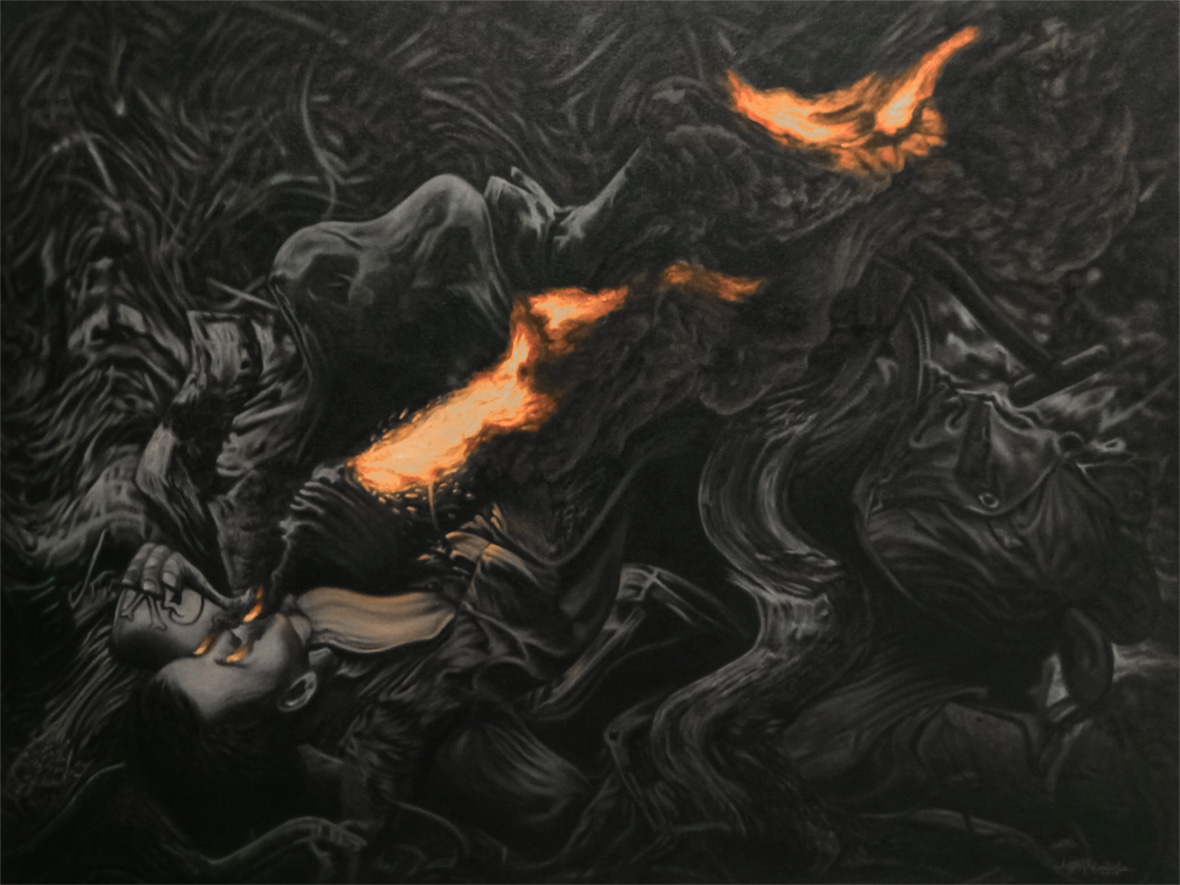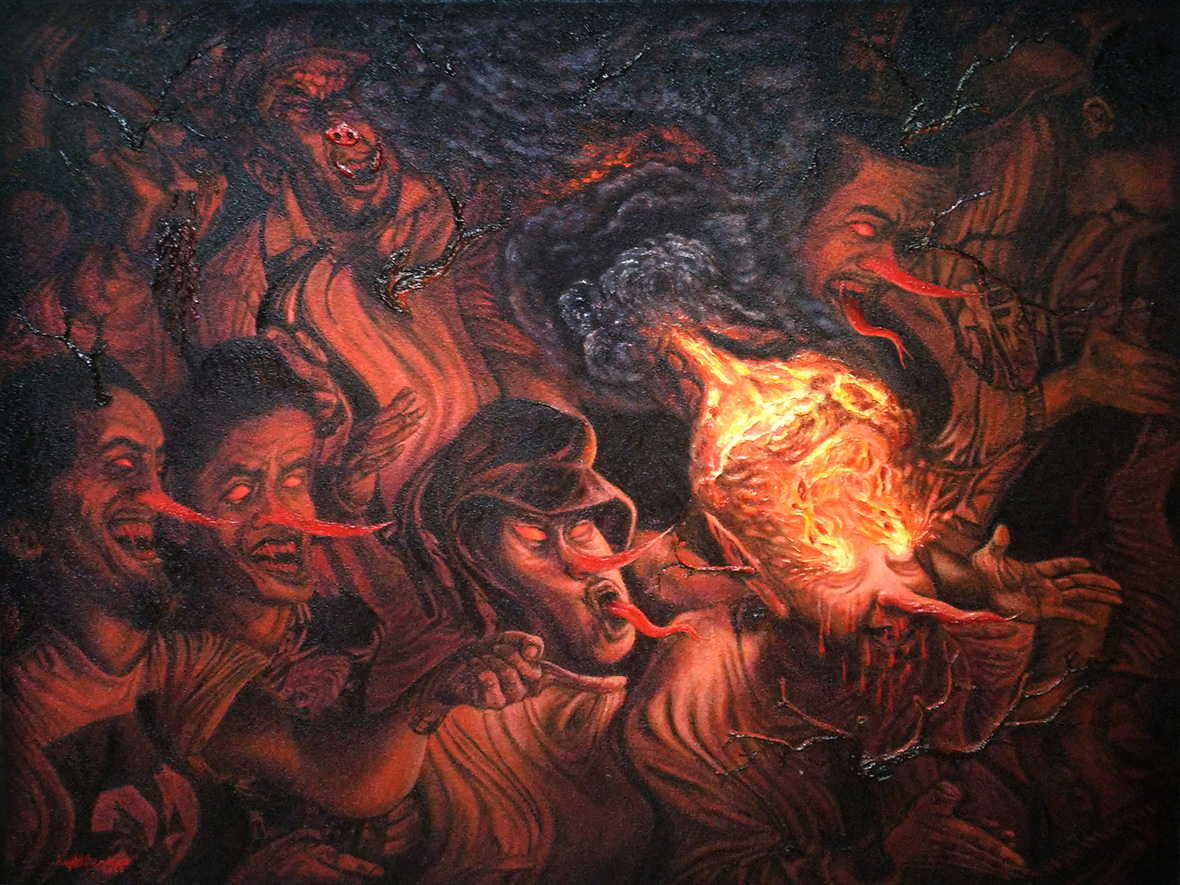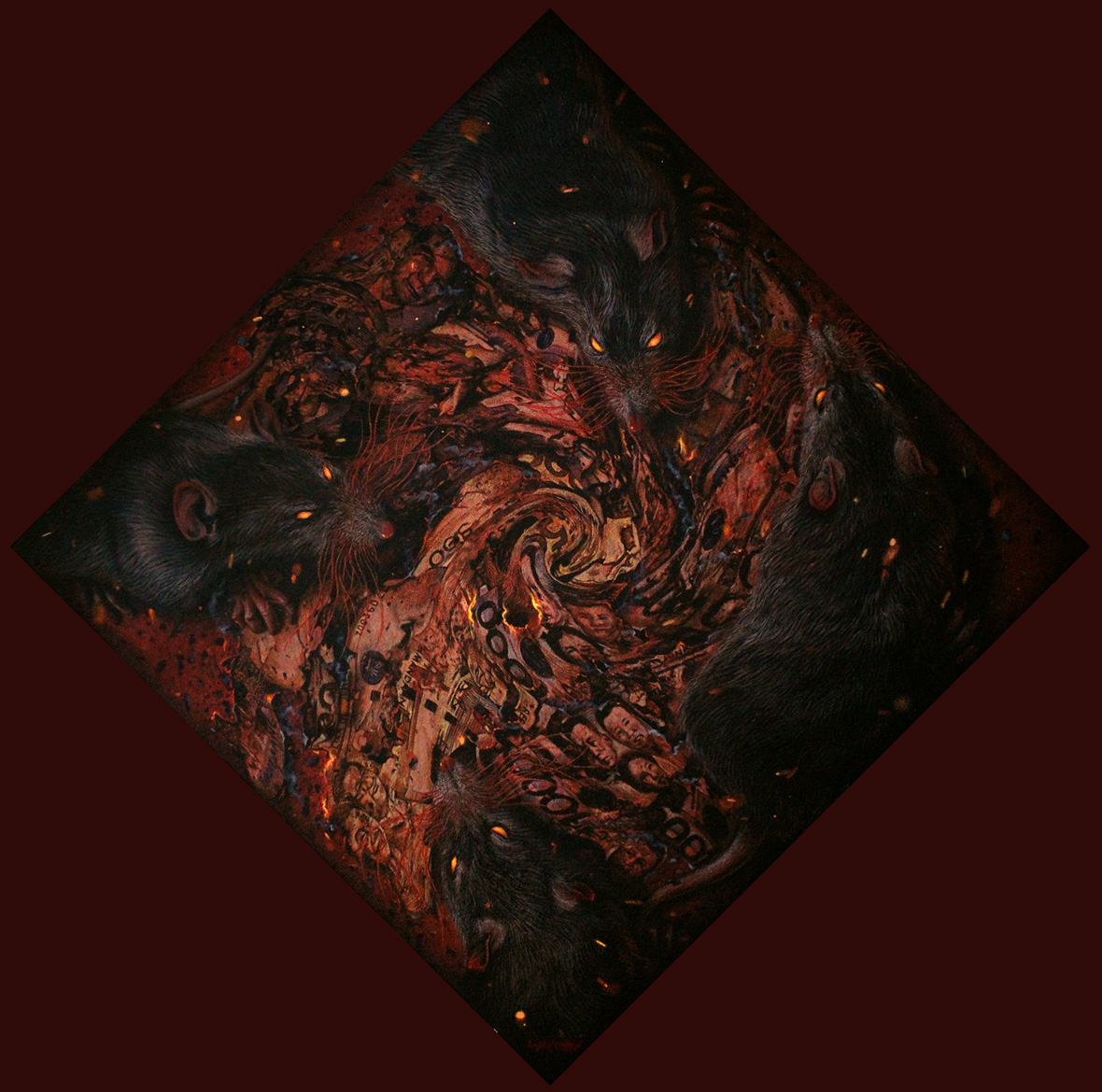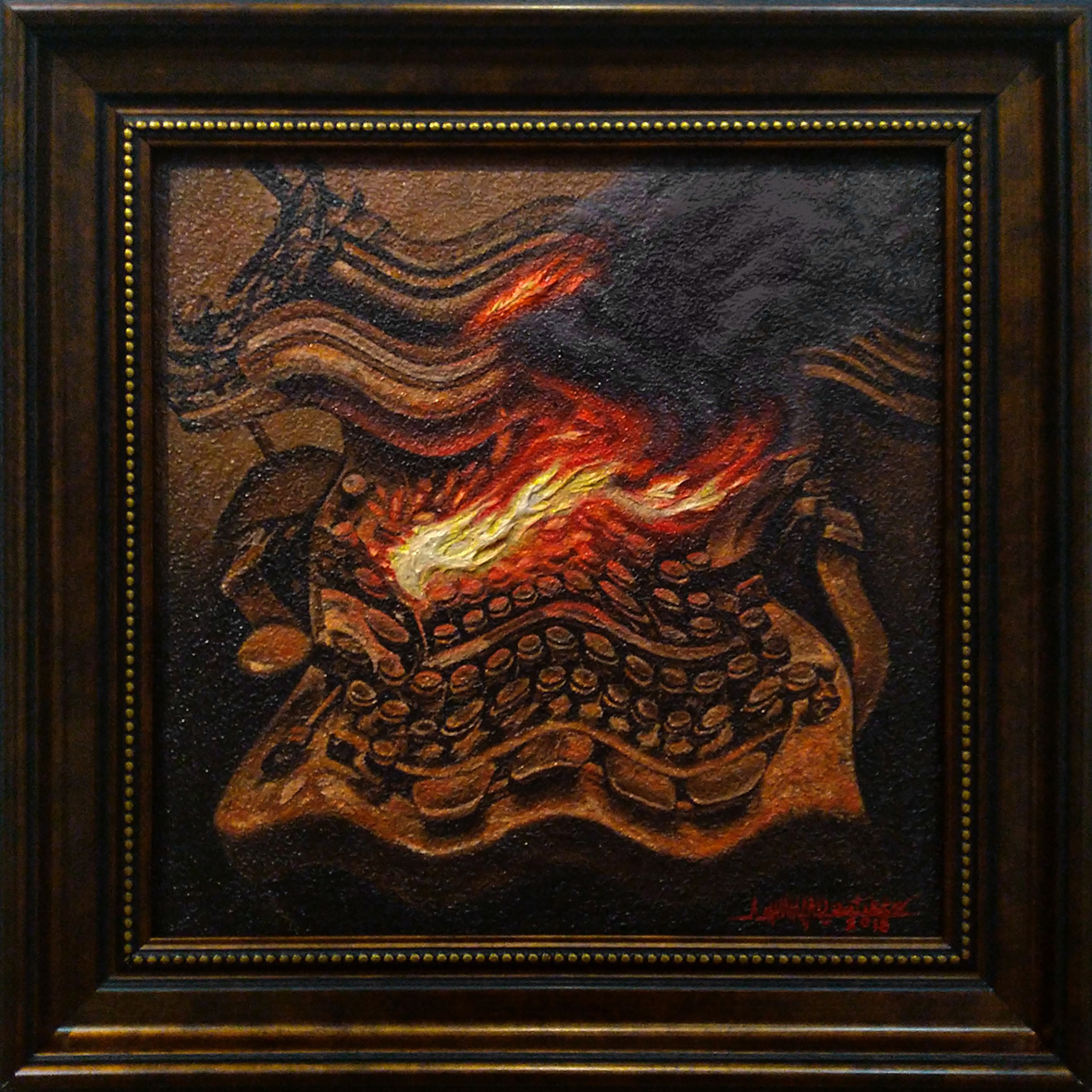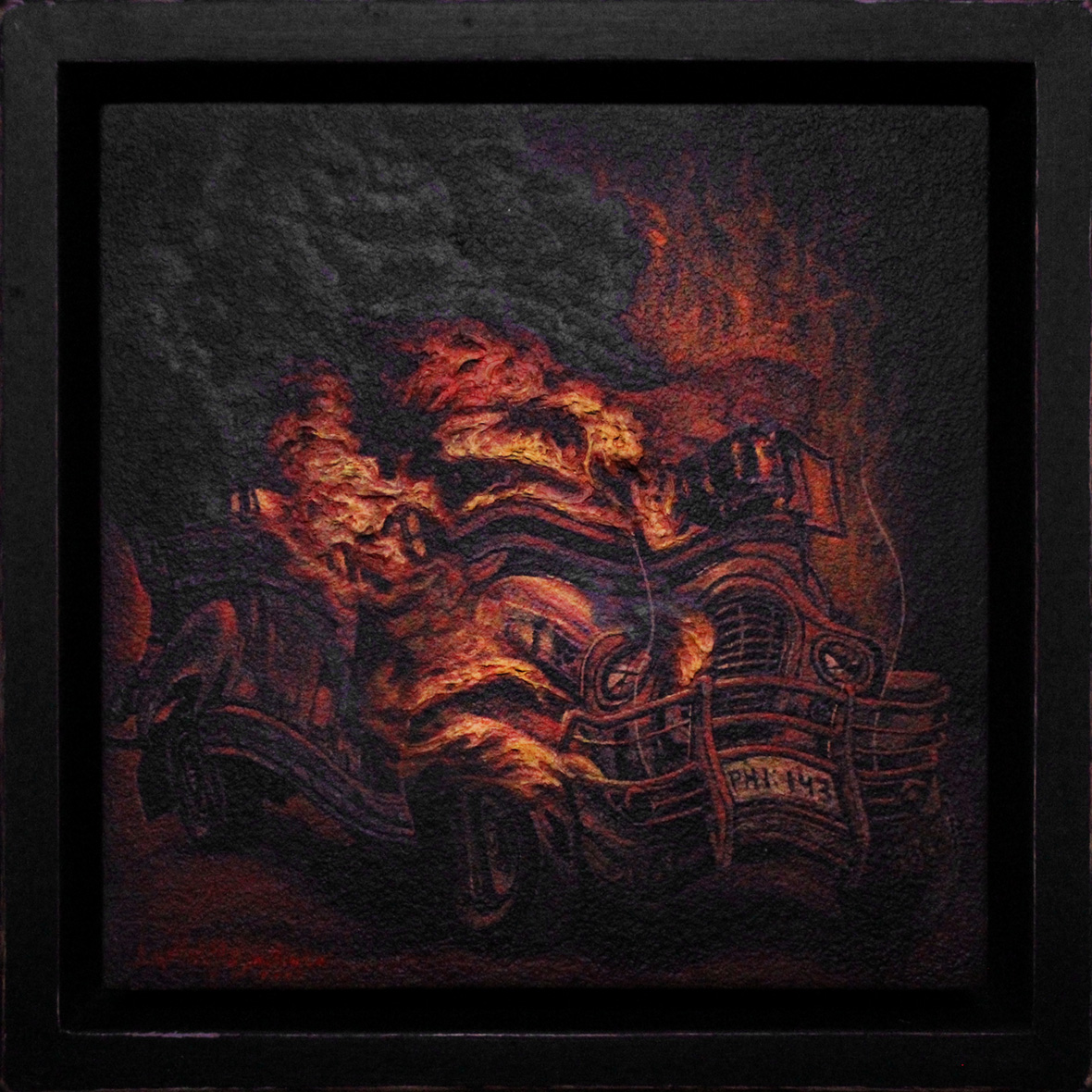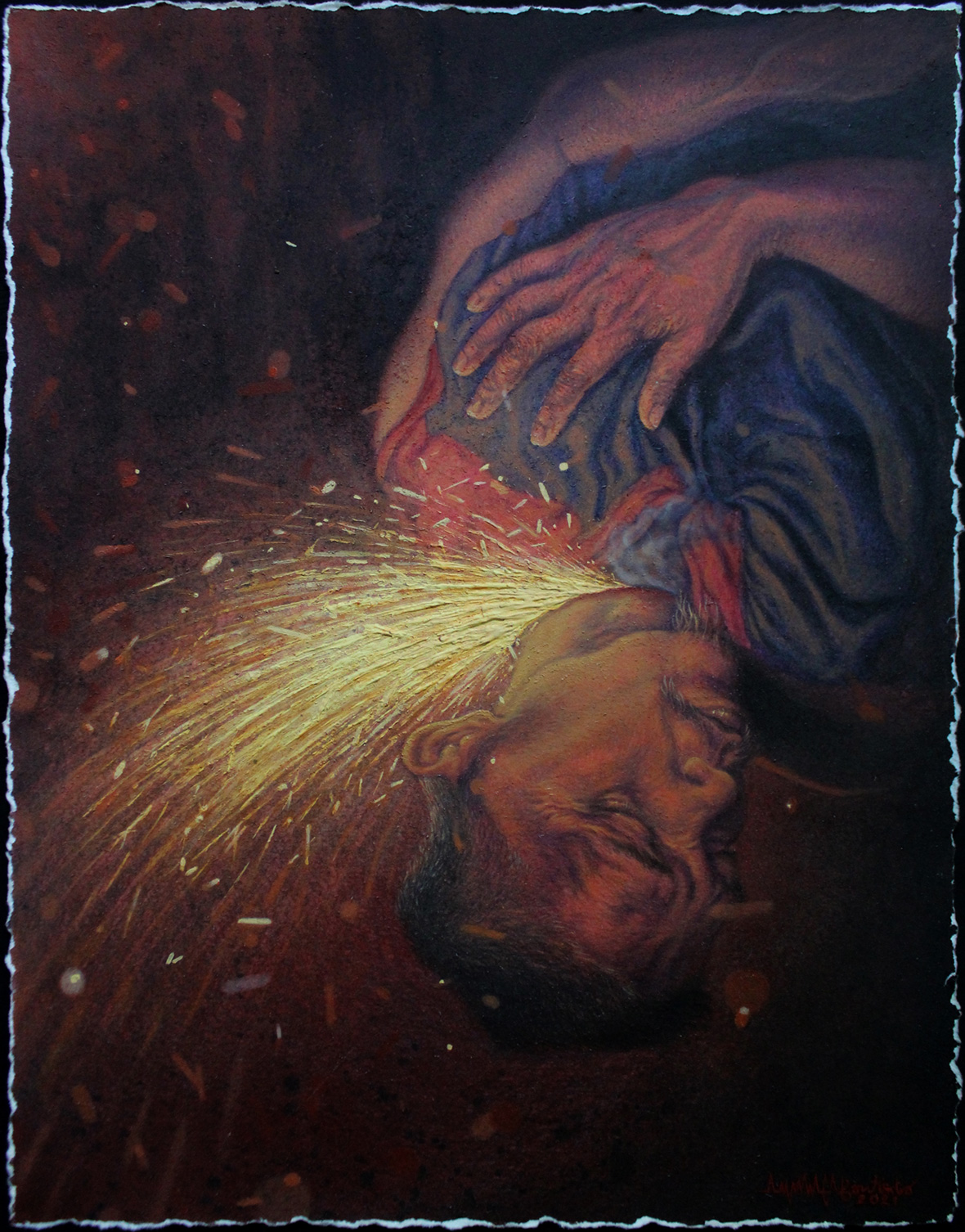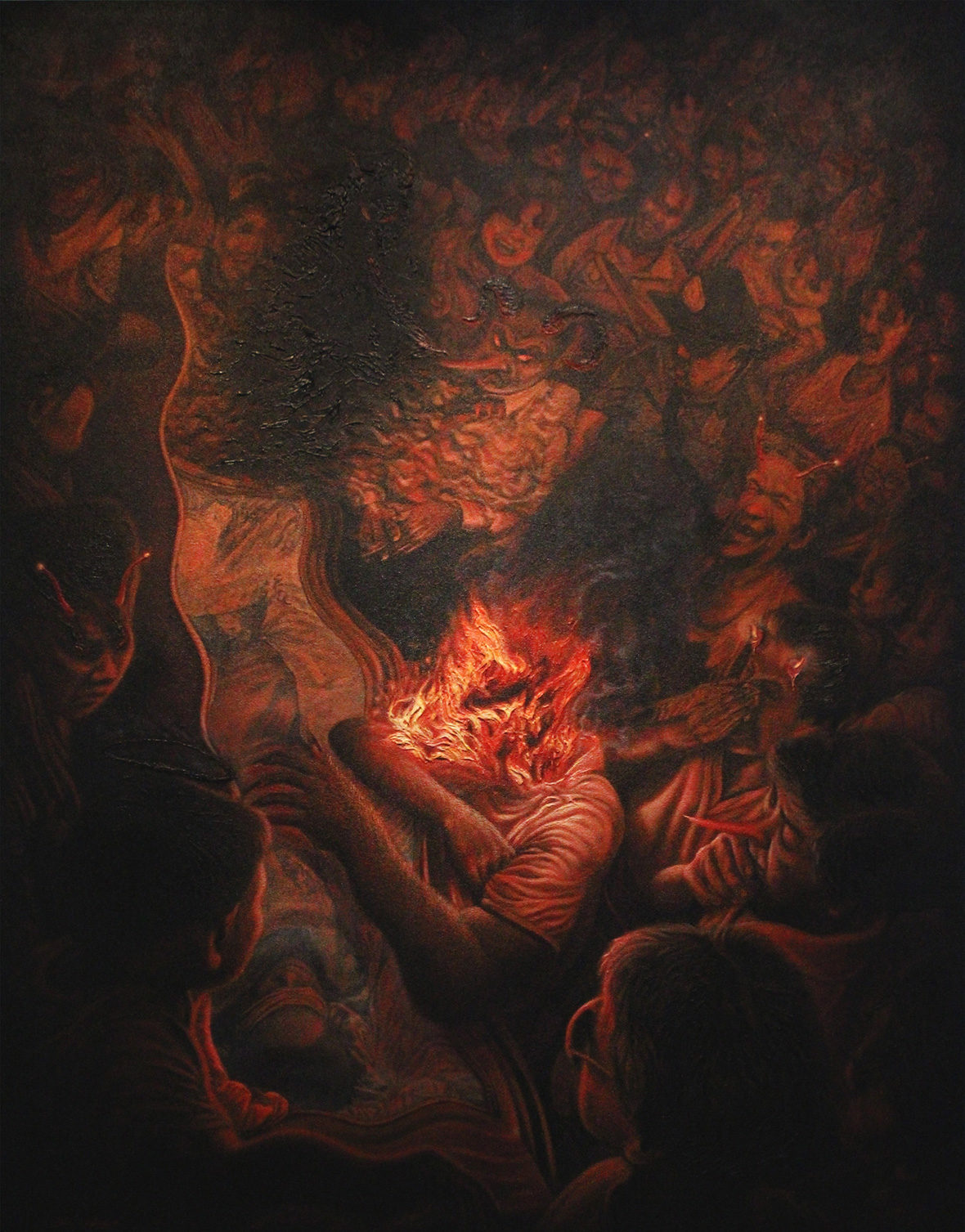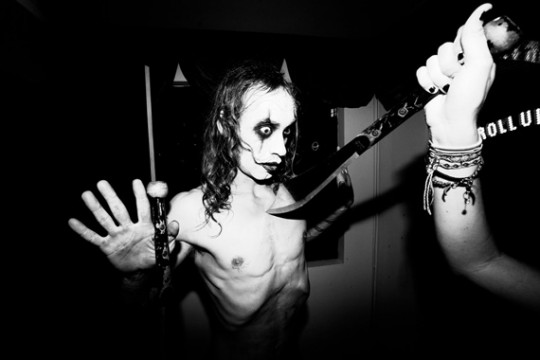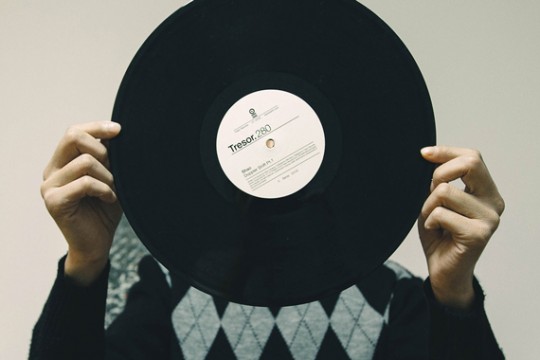
Lymuel Aguilar Bautista is angry. The Filipino painter surveys the injustice happening across his country and sees red. His blood boils and his vision blurs. But this rage is used for constructive ends. Such righteous indignation pulls viewers into his canvases, and there’s a universality to his fiery passion. Corruption, classism, misinformation, and greed—they’re all aspects of humanity that are difficult to face, but Bautista makes sure we don’t avert our gaze.
Lymuel Aguilar Bautista 总对身边愤愤不平。在翻阅了国内大量不公平事件之后,这位菲律宾画家将手中的拳头化作犀利的笔触,心中的热血化为颜料,奋笔疾书起来。正义的光芒从画卷中四散开来,不断吸引着观众的目光,感受那来自艺术家内心的灼烧。腐败、阶级固化、媒体的错误引导、以及人与人之间的尔虞我诈、贪婪成性,这些人性中令人不齿的方面被大胆刻画,Lymuel 希望以此唤醒人们的认知。
Like trying to view beyond blazing heat, his paintings are warped, forcing viewers to squint in order to discern the distorted imagery’s meaning. The characters writhe in pain and seduction as if they are being reshaped by the swirling curvatures. Rats nibble at a singed pool of cash while prisoners struggle for a place to sleep on overcrowded floors. Dogs eat each other and liars laugh manically. Fire is also persistent across his output, scorching all in its path. In one, a scarecrow in a brittle field is consumed in flames; in another, the head of a mourner erupts in a fireball as he kneels in front of an open coffin.
The world that Bautista portrays is a terrifying sight, but it’s one rendered with care and skill. “I don’t consider myself an activist,” he says. “I consider it my responsibility as an artist to portray the true events of my time. A time of challenge to our freedom is not a time for fear and silence; it’s the time to stand.” Reality is bleak, but it can still be beautiful, both the throes of struggle and the possibility of hope that the future holds.
Lymuel 的画作以一种极度扭曲的状态呈现,强大的视觉冲击力让观众不敢与之对视。画中的人物在痛苦和诱惑中煎熬,一个个袒露出狰狞、崎岖的面孔,仿佛被溶解在蜿蜒的线条之中。恶狗相互残杀、老鼠围在烧焦纸币贪婪啃噬、囚犯们在拥挤的空间内无法入睡、骗子们疯狂大笑。火,是他作品里频繁出现的意象之一,将所到之处烧得焦黑。
画中的世界阴森可怖,也足以体现他的超群的绘画技艺。“我不认为我是一个社会活动家”,他表示,“作为艺术家,将身边发生的真实事件用艺术捕捉下来是我义不容辞的责任。在我所处的环境,自由受到巨大挑战,而我们更不应害怕或是沉默;反之,我们应奋起抗争”。现实令人沮丧,但它仍能变得美好,没有挣扎就没有可能。

Bautista usually deals with current events in the Philippines. Drug war victims, murdered farmers, prisoners, and corrupt officials are regular characters in his art. They’re as common in his paintings as they are in news headlines.
Balat-Kayo II depicts a group of policemen with eyes obscured by the low brim of their hats, all of them led by an officer with red eyes, a Pinocchio nose, and clown makeup. “It’s about the authorities who enforce the law but hypocritically disobey it themselves,” Bautista explains. “This is personal for me because I have friends who’ve experienced it firsthand.”
A jeepney engulfed in flames in Karag-Karag speaks to the struggles of low-income drivers in the face of new laws and regulations that threaten their livelihoods. And Loading… deals with corruption in the form of unnecessary road repair. He says he witnesses it frequently in his hometown, but it’s suspected as often in New York as it is in Luzon.
Lymuel 的创作围绕菲律宾时事展开。毒品战争中的受难者、被谋害的百姓、在押犯人以及贪污腐败的官吏皆是其作品中经常出现的人物。这些角色也通常是新闻报道中的常客。
作品《Balat-Kayo II(人皮衣 2)》中,一帮警察簇拥在带头警官左右。他红色的双眼杀气凶凶、鼻子高高翘起,像极了黑化的匹诺曹造型。“我想讽刺的是某些道貌岸然的执法人员,他们知法犯法,屡屡越界”,Lymuel 解释道,“这些灵感均来自我的生活,还有一些是身边朋友的亲身经历。”
对于收入微薄的当地司机而言,近几年新出台的法律法规严重影响了他们的生计。Lymuel 以此为灵感创作了作品《Karag-Karag(嗒嗒嗒)》:画面中,吉普巴士熊熊燃烧。当地,另一些菲律宾政府官僚为了掩盖腐败现象,进行无必要的道路修缮,这些也同样被 Lymuel 画在作品中。Lymuel 表示,这一现象不光是在他的家乡吕宋(Luzon)出现,全球各地都时有发生。

He traffics in universal issues in other works as well; insights to be considered regardless of particular circumstances. In one painting, a typewriter burns fiercely, a commentary on how media can be inverted to spread propaganda and misinformation. It’s called Peke (“fake” in English), a commentary on fake news, which has been an increasingly common issue. Though it’s an issue that’s been on an uptick, it’s one that’s reared its head throughout the history of the written word and moving image. Pakitang Tao is an invocation against those who care about appearing proper but are quick to judge others in private. In it, a starkly lit protagonist with a seared halo and freshly cut horns is surrounded by a heavily shadowed, fully horned crowd with black eyes. He’s urging us to be good, even when people aren’t watching. And Pagdiriwang II, which depicts gamblers playing on the Philippines flag during its own funeral, is a not-so-subtle critique about greed consuming a nation from the inside.
作品中反所映的社会问题,在全球各地都具有一定的普遍性。一幅名为《Peke(巨响)》的作品中,打字机被火焰吞噬,表达了媒体在宣传鼓吹和传播虚假信息时的丑陋姿态。Peke,为他加禄语,义为“虚假”。虚假新闻问题由来已久,自文字和动画的诞生以来便不断蒙蔽着大众的双眼。另一幅名为《Pakitang Tao(伪善)》的作品则讽刺了那些表面上恭恭敬敬,私下却随意评判他人的人,Lymuel 在作品中劝诫我们要表里如一,不要背地使坏。作品《Pagdiriwang II(仪式2)》则描绘了一场葬礼,赌徒们在菲律宾国旗上放肆玩乐,针砭时弊地批评了贪婪使国家元气受损这一现象。
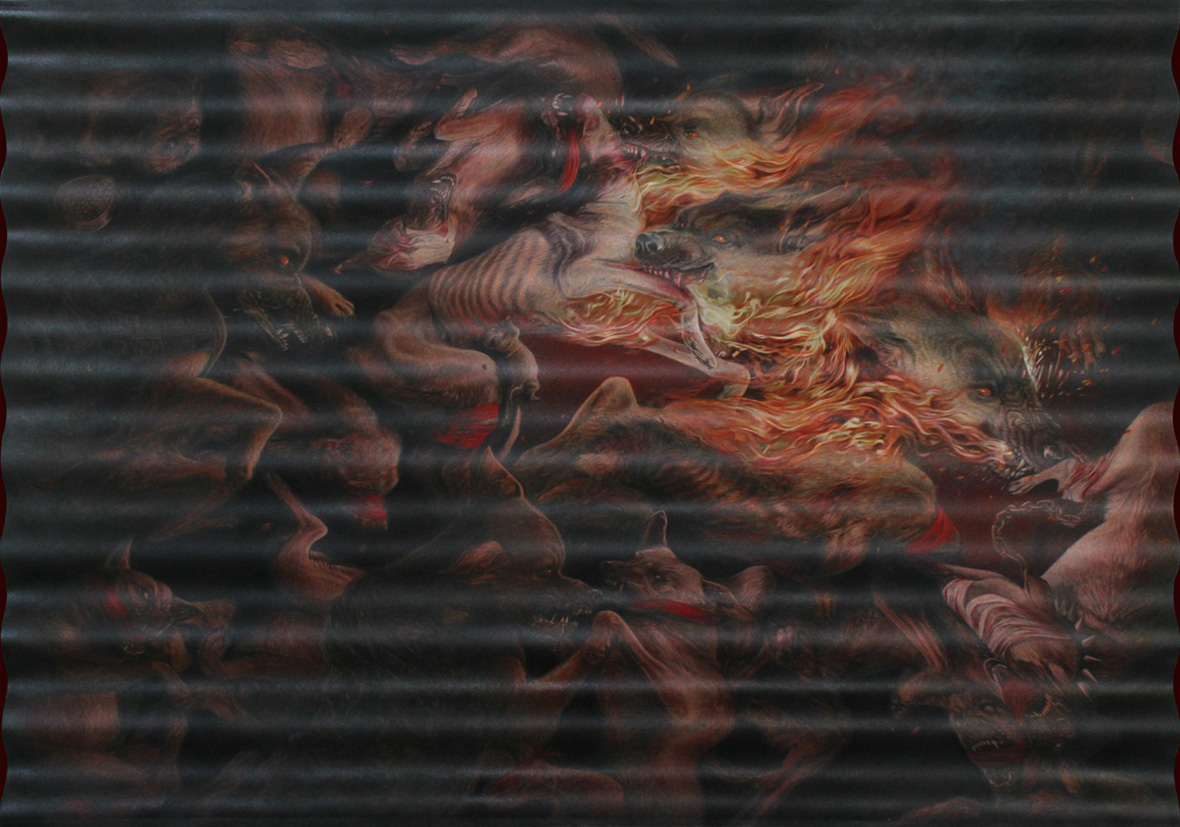
Over the past few years, Bautista’s outlook has only gotten darker, descending deeper into anguish. Shades of glowing orange have been stoked into bloody reds, and his imagery is becoming increasingly savage. Most recently, he’s taken to portraying dogs in various states of suffering and violence. The Haunting Wail Of Chaos is the mantel place for everything bothering him, supercharged by the pandemic. A mass of rabid dogs attacks each other, eating each other’s flesh as they’re set ablaze. It’s an allegory for the pain we inflict on each other while suffering from larger forces. The flame is the true source of our troubles, but instead of smothering it, we lash out at each other. The pandemic, the subsequent rise in power of the state, and the increased attacks on dissidence—all of this feeds the fire.
在过去的几年间,Lymuel 的作品基调愈发阴暗,像是深陷在现实悲痛的泥沼之中。画面上,数道橘色火焰与血染的红色相互映衬,整体风格变得愈加凶恶。近来,他的作品大多与狗有关,它们苦苦挣扎于暴力,惨状不一。作品《The Haunting Wail Of Chaos(混乱哀嚎)》像是他在疫情期间烦闷情绪的一次爆发。画面中,狂犬在燎燎火炎中拼命撕咬着彼此,讽喻了一种现象:人们在忍受外界带来的巨大痛苦时依然相互残杀。然而,恶狗身上的火焰才是问题的真正所在,但它们并未及时救火,反而相互推卸责任,伤害彼此。随着疫情的蔓延,随之而来的却是国家内部斗争,以及对异见人士的权力游戏 —— 所有这一切无异于火上浇油。
It takes unflinching honesty to find solutions to our problems, and this is Bautista’s ultimate goal. Hope shines even in his most harsh paintings. This is perhaps best encapsulated in Panimdim, which depicts a man with his head being sawed off but is designed to convey a message of personal redemption. “It’s about healing one’s self and learning to fight whatever fire surrounds us,” he says. “It symbolizes the dream that strives to be released from within, where you learn to heal the wound caused by defeat and rediscover the light within.”
若想解决问题,我们必须真诚、坦然,并且毫不畏惧 —— 这是 Lymuel 想要告诉我们的道理。就算在他最为怪诞阴暗的作品中,希望之光仍绽放。这一点在他的作品《Panimdim(悲)》中得以最好的呈现,男人的断脖之间喷涌出金色的光束,传递出了自我救赎的讯息。“这幅作品表达了自我疗愈以及学会战胜生活中各种挑战的愿望”,他接着说到,“它象征着炽热的梦想,前行的道路总会受伤,但能帮我们重拾内心的光芒。”
Like our stories? Follow us on Facebook and Instagram.
Instagram: @lymuelbautista
Contributor: Mike Steyels
Chinese Translation: Alice Zhang

